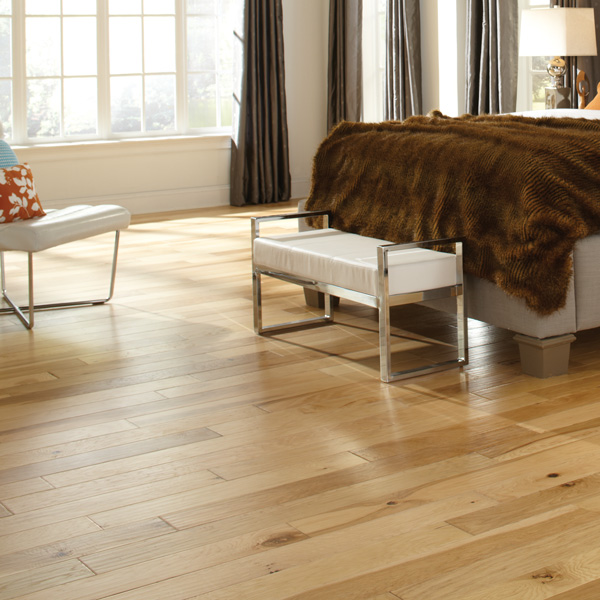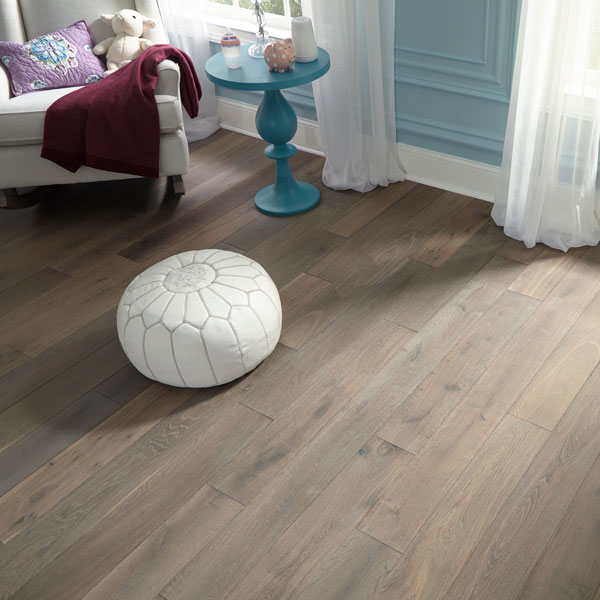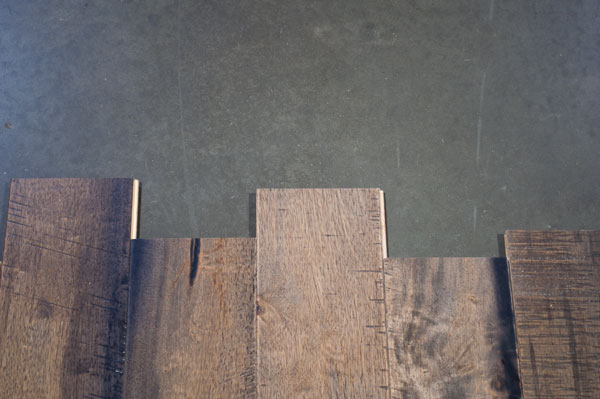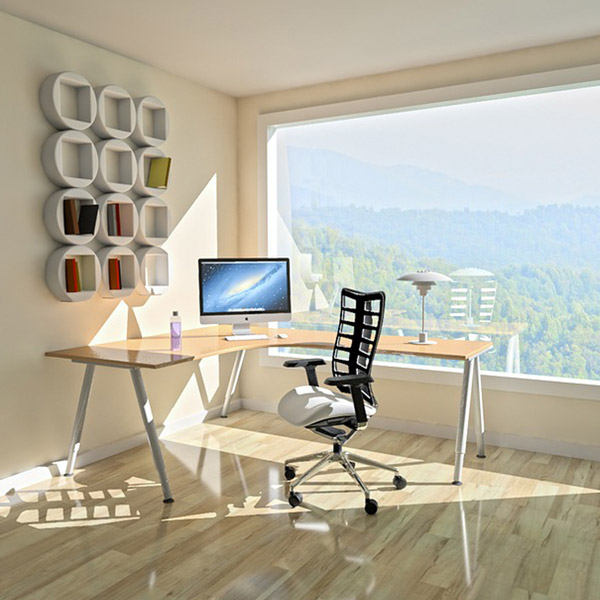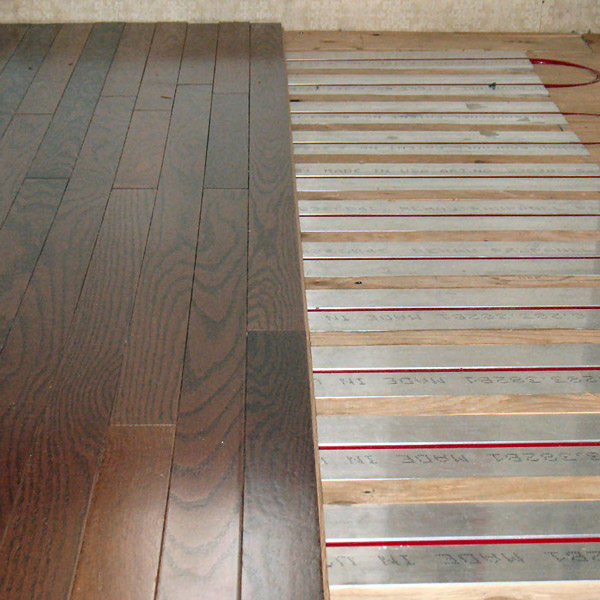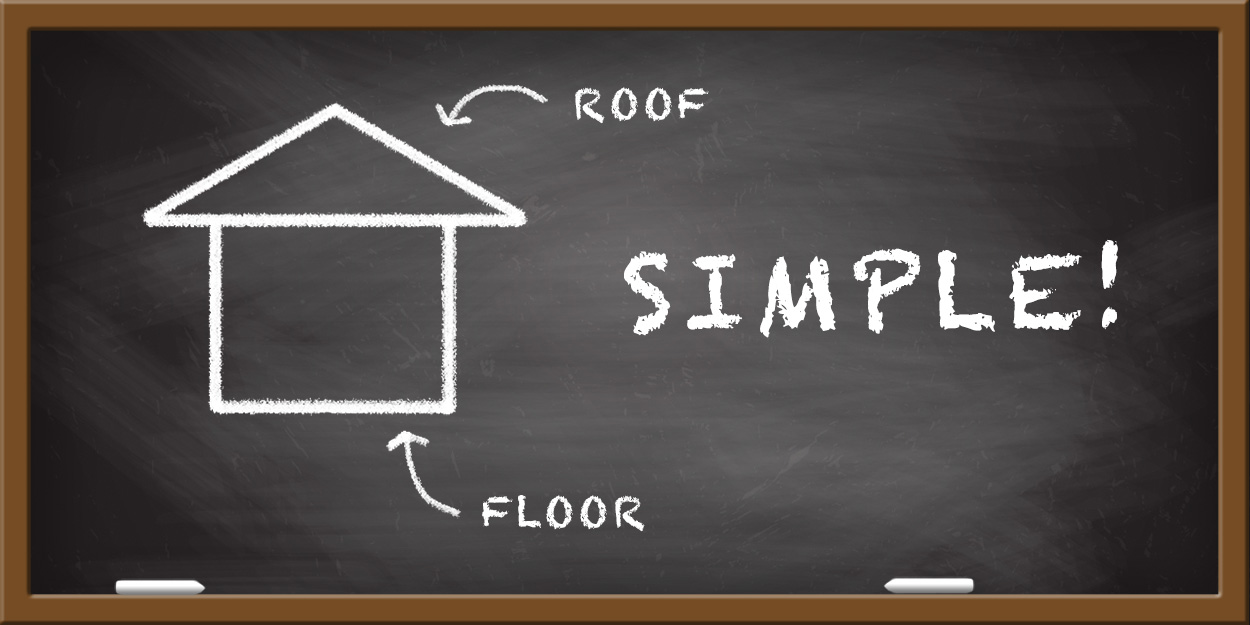
Floors 101
Where do I even start?
If you are looking for a new floor, chances are you know what style or color you want, but you are not brushed up on your Janka ratings or saw patterns. If you want to make the best decision without getting a career in the hardwood industry, Floors 101 is exactly where you need to be. There is actually a lot of science that goes into flooring. In some cases, you might feel like you don’t even know which questions to ask. Don’t worry. We’re here to help. Start making your way down this page and we’ll help you understand everything that you’ll need to know. If we miss anything here, you can always Ask the Experts!
Where do I even start?
If you are looking for a new floor, chances are you know what style or color you want, but you are not brushed up on your Janka ratings or saw patterns. If you want to make the best decision without getting a career in the hardwood industry, Floors 101 is exactly where you need to be. There is actually a lot of science that goes into flooring. In some cases, you might feel like you don’t even know which questions to ask. Don’t worry. We’re here to help. Start making your way down this page and we’ll help you understand everything that you’ll need to know. If we miss anything here, you can always Ask the Experts!
First Things First…
What is a floor?
The floor of your home is the part that crashes into you, if you accidentally roll off of the couch. You probably already knew that. What you might not know is that there is actually a floor under your floor. This is the subfloor. (More on this in a moment.) You also likely know that there are lots of different kinds of flooring. It would be easy, otherwise, and there would be no reason for Floors 101 to exist. The good news is that you have lots of different floors to choose from, so you can get just the right floor for your home. The bad news is that you have lots of different floors to choose from, so there is a chance you’ll choose the wrong floor.We’re not going to let that happen!
The first thing you’ll need to know about flooring is that it can be made from many different materials. No doubt, you’re familiar with the idea of tile, wood, carpet, linoleum, and so on. If you are here, you have presumably decided to explore the possibility of putting hardwood floors into your home or business. If this is the case, then you will basically have three options: solid hardwoods, engineered hardwoods, or a manufactured wood alternative (waterproof rigid-core, in our case.)
What is a solid hardwood?
A solid hardwood floor is what most people think of when they imagine a hardwood floor. The flooring is just a piece of wood, cut into a plank, and finished as a floor. Solids come in a wide range of lengths, widths, and a few different options in terms of thickness. Generally speaking, the wider the solid plank, the more careful the installation must be done to avoid cupping in the future. Solids can generally be sanded and refinished at least once in their lifetime. Thicker floors can normally be refinished more times, but realistically it is rare that a floor will need to be refinished too many times. Solid floors have a distinctive look that is very difficult for engineered or manufactured floors to replicate.
What is an engineered hardwood?
Engineered hardwood floors are a modern variation of the traditional hardwood floor. Engineered hardwood flooring is made of several overlapping layers of wood, with the top layer being the exact same wood that a traditional solid hardwood plank would be made of. Essentially, if you walk across an engineered and then you walk across a solid, your feet have touched the exact same thing. Engineered floors can more easily support wider widths and tend to bow less in longer lengths because of the overlapping grains underneath the surface layer.
What is waterproof rigid-core?
Our waterproof flooring is not a wood product. It is a Rigid-Core product constructed with tremendous structural stability and an incredibly durable, impact/dent resistant surface layer, which has been embossed to increase the appearance of real wood. Developed to give homeowners an option to get a real wood look in high moisture areas where traditional wood floors simply cannot be installed, our waterproof flooring is 100% waterproof from top to bottom. If the plank is cut into twenty pieces and submerged in water, it will be no more vulnerable than it was when it came off the manufacturing line.
What is a solid hardwood?
A solid hardwood floor is what most people think of when they imagine a hardwood floor. The flooring is just a piece of wood, cut into a plank, and finished as a floor. Solids come in a wide range of lengths, widths, and a few different options in terms of thickness. Generally speaking, the wider the solid plank, the more careful the installation must be done to avoid cupping in the future. Solids can generally be sanded and refinished at least once in their lifetime. Thicker floors can normally be refinished more times, but realistically it is rare that a floor will need to be refinished too many times. Solid floors have a distinctive look that is very difficult for engineered or manufactured floors to replicate.
What is an engineered hardwood?
Engineered hardwood floors are a modern variation of the traditional hardwood floor. Engineered hardwood flooring is made of several overlapping layers of wood, with the top layer being the exact same wood that a traditional solid hardwood plank would be made of. Essentially, if you walk across an engineered and then you walk across a solid, your feet have touched the exact same thing. Engineered floors can more easily support wider widths and tend to bow less in longer lengths because of the overlapping grains underneath the surface layer.
What is waterproof rigid-core?
Our waterproof flooring is not a wood product. It is a Rigid-Core product constructed with tremendous structural stability and an incredibly durable, impact/dent resistant surface layer, which has been embossed to increase the appearance of real wood. Developed to give homeowners an option to get a real wood look in high moisture areas where traditional wood floors simply cannot be installed, our waterproof flooring is 100% waterproof from top to bottom. If the plank is cut into twenty pieces and submerged in water, it will be no more vulnerable than it was when it came off the manufacturing line.
You mentioned subfloor. Why is that important?
Your subfloor is the super-secret, hidden floor that your actual floor sits on. It serves several important roles. It provides additional stability to your floors, as well as limiting the amount of air flow and moisture that pushes up from beneath. Most importantly for our purposes here, it gives your floor something to attach to. This is important because certain subfloors make some installation processes impossible. For instance, if you have a concrete subfloor (called a “slab”), then you obviously cannot nail into it very well. This means that you’ll need to make sure you choose a floor that can be glued or simply laid down on top (this is called “floated”). Different subfloors have different advantages and disadvantages. If all of this makes you start to feel overwhelmed, don’t worry. You don’t need to understand all of the options here, a retailer will. Just make sure that your retailer understands what kind of subfloor you have, so they can help you to choose correctly.
You mentioned subfloor. Why is that important?
Your subfloor is the super-secret, hidden floor that your actual floor sits on. It serves several important roles. It provides additional stability to your floors, as well as limiting the amount of air flow and moisture that pushes up from beneath. Most importantly for our purposes here, it gives your floor something to attach to. This is important because certain subfloors make some installation processes impossible. For instance, if you have a concrete subfloor (called a “slab”), then you obviously cannot nail into it very well. This means that you’ll need to make sure you choose a floor that can be glued or simply laid down on top (this is called “floated”). Different subfloors have different advantages and disadvantages. If all of this makes you start to feel overwhelmed, don’t worry. You don’t need to understand all of the options here, a retailer will. Just make sure that your retailer understands what kind of subfloor you have, so they can help you to choose correctly.
Should I be concerned about…?
Will my cute doggy destroy my new floors?
Pets (and even small children) can certainly put a floor’s resiliency to the test. In addition to choosing the right floor, you’ll need to pay attention to the finish that is applied to the floor. Many of our floors are protected with a UV Cured Aluminum Oxide finish, which makes them stand up to some additional punishment. To protect against scratches and gouges, you can also choose a harder wood. (Remember the funny word “Janka” from earlier? This is where that can come into play. Learn more about that here.) Oaks are known to be very hard, but there are some (hickory and maple, for instance) that have an even greater density. If you have a particularly active pet, you may want to consider one of our waterproof rigid-core options. These have been specifically engineered to resist scratch and scrape wear-and-tear. As always, if you have any doubts, discuss this thoroughly with your retailer.
Does the sun get angry at new floors?
Sunlight can affect hardwood floors adversely; some more than others. For instance, Brazilian Cherry is particularly responsive to sunlight. If you are planning on installing a hardwood floor into a room that gets bombarded with sunlight, you may want to consider diffusing the light in some way. Be particularly careful in situations where the light shines starkly on one section of the floor while leaving another in shadow. The position of the window may come into play here, but more often it can have to do with the way the room is furnished. An area rug, for instance, will protect the floor underneath from the sun. Similarly, a sofa or a table may block the sun rays entirely while the spillover strikes the floor directly.
Should I be worried about my radiant heat system?
Radiant heat is nothing to be afraid of. In fact, it is pretty awesome. There are some considerations that should be made as it pertains to choosing a floor. Radiant heat systems vary in how they warm your floor. Some systems affect the underside of the flooring more harshly than others. Many of our hardwoods are rated for radiant heat. Even our waterproof rigid-core can be installed over radiant heat, although we do not recommend it for all systems. To further aid you in this, we do provide installation instructions for radiant heat systems in our Installation Guide. Please note that our installation guides differ, depending on which type of floor you are interested in. Be sure to download the appropriate guide and make sure you fully understand which radiant system you will be installing over.
Will my cute doggy destroy my new floors?
Pets (and even small children) can certainly put a floor’s resiliency to the test. In addition to choosing the right floor, you’ll need to pay attention to the finish that is applied to the floor. Many of our floors are protected with a UV Cured Aluminum Oxide finish, which makes them stand up to some additional punishment. To protect against scratches and gouges, you can also choose a harder wood. (Remember the funny word “Janka” from earlier? This is where that can come into play. Learn more about that here.) Oaks are known to be very hard, but there are some (hickory and maple, for instance) that have an even greater density. If you have a particularly active pet, you may want to consider one of our waterproof rigid-core options. These have been specifically engineered to resist scratch and scrape wear-and-tear. As always, if you have any doubts, discuss this thoroughly with your retailer.
Does the sun get angry at new floors?
Sunlight can affect hardwood floors adversely; some more than others. For instance, Brazilian Cherry is particularly responsive to sunlight. If you are planning on installing a hardwood floor into a room that gets bombarded with sunlight, you may want to consider diffusing the light in some way. Be particularly careful in situations where the light shines starkly on one section of the floor while leaving another in shadow. The position of the window may come into play here, but more often it can have to do with the way the room is furnished. An area rug, for instance, will protect the floor underneath from the sun. Similarly, a sofa or a table may block the sun rays entirely while the spillover strikes the floor directly.
Should I be worried about my radiant heat system?
Radiant heat is nothing to be afraid of. In fact, it is pretty awesome. There are some considerations that should be made as it pertains to choosing a floor. Radiant heat systems vary in how they warm your floor. Some systems affect the underside of the flooring more harshly than others. Many of our hardwoods are rated for radiant heat. Even our waterproof rigid-core can be installed over radiant heat, although we do not recommend it for all systems. To further aid you in this, we do provide installation instructions for radiant heat systems in our Installation Guide. Please note that our installation guides differ, depending on which type of floor you are interested in. Be sure to download the appropriate guide and make sure you fully understand which radiant system you will be installing over.

Janka
The Janka scale is the industry standard by which woods are ranked in terms of how hard they are. The test itself is not terribly complicated. Basically, the people who care about these things shoot a small steel ball with a measured amount of air pressure. They increase the pressure until the ball embeds itself into the wood to a certain depth, then someone wearing safety goggles uses the amount of pressure that was needed to grade the density of the wood. The simple way to think about it is: the higher the Janka grade, the harder the species of wood. Oak has become the benchmark for hardwood floors because it is hard enough to hold up against foot traffic, but not so hard that it is difficult to work with.

Janka
The Janka scale is the industry standard by which woods are ranked in terms of how hard they are. The test itself is not terribly complicated. Basically, the people who care about these things shoot a small steel ball with a measured amount of air pressure. They increase the pressure until the ball embeds itself into the wood to a certain depth, then someone wearing safety goggles uses the amount of pressure that was needed to grade the density of the wood. The simple way to think about it is: the higher the Janka grade, the harder the species of wood. Oak has become the benchmark for hardwood floors because it is hard enough to hold up against foot traffic, but not so hard that it is difficult to work with.
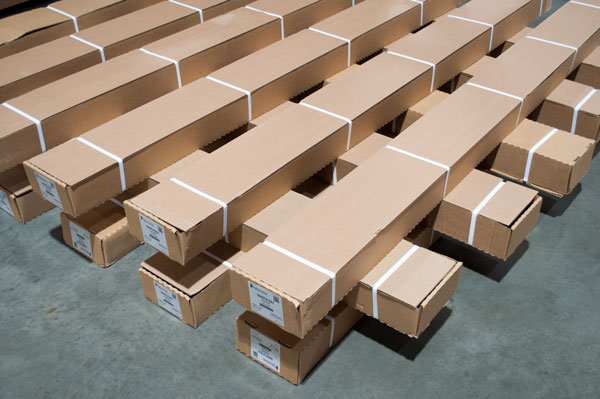
Acclimation
If you think about a tree, you’ll imagine the roots leading into the trunk, the trunk branching out into branches, and the branches covered in green leaves. Those leaves need a lot of water. So the tree pulls the moisture from the ground and sends it up through the trunk to the leaves. That trunk is the very same thing that you will be walking on. It stands to reason, then, that the wood that you will be putting down on as your new floor is exceptionally good at transferring moisture through it. This is good for a tree in the forest, but bad for a floor. A wood floor will continue to absorb and release moisture from the air. As it does, the plank will bend and flex to accommodate the space needed for the moisture. What this means is that a new floor will need a certain amount of time to get used to the moisture in the air of your home. It is a very bad idea to simply bring the flooring in and install it that day. Instead, the flooring will need to sit in the room for a few days (or sometimes weeks) in order to ensure that bowing and bending will be minimal once it is installed.

Acclimation
If you think about a tree, you’ll imagine the roots leading into the trunk, the trunk branching out into branches, and the branches covered in green leaves. Those leaves need a lot of water. So the tree pulls the moisture from the ground and sends it up through the trunk to the leaves. That trunk is the very same thing that you will be walking on. It stands to reason, then, that the wood that you will be putting down on as your new floor is exceptionally good at transferring moisture through it. This is good for a tree in the forest, but bad for a floor. A wood floor will continue to absorb and release moisture from the air. As it does, the plank will bend and flex to accommodate the space needed for the moisture. What this means is that a new floor will need a certain amount of time to get used to the moisture in the air of your home. It is a very bad idea to simply bring the flooring in and install it that day. Instead, the flooring will need to sit in the room for a few days (or sometimes weeks) in order to ensure that bowing and bending will be minimal once it is installed.
Yeah, but what about…?
We try to plan ahead and think of everything you might not know. As much as we try, there is certainly something that we have missed. As you have additional question, just ask. We work very hard to answer all of the questions that come in as quickly as we can.
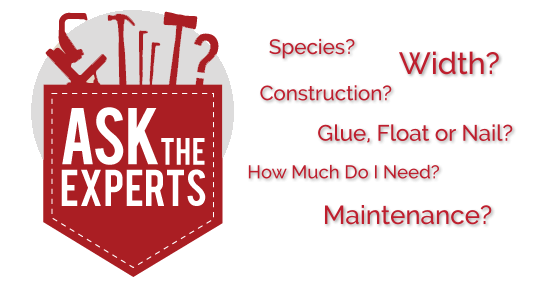
Yeah, but what about…?
We try to plan ahead and think of everything you might not know. As much as we try, there is certainly something that we have missed. As you have additional question, just ask. We work very hard to answer all of the questions that come in as quickly as we can.


